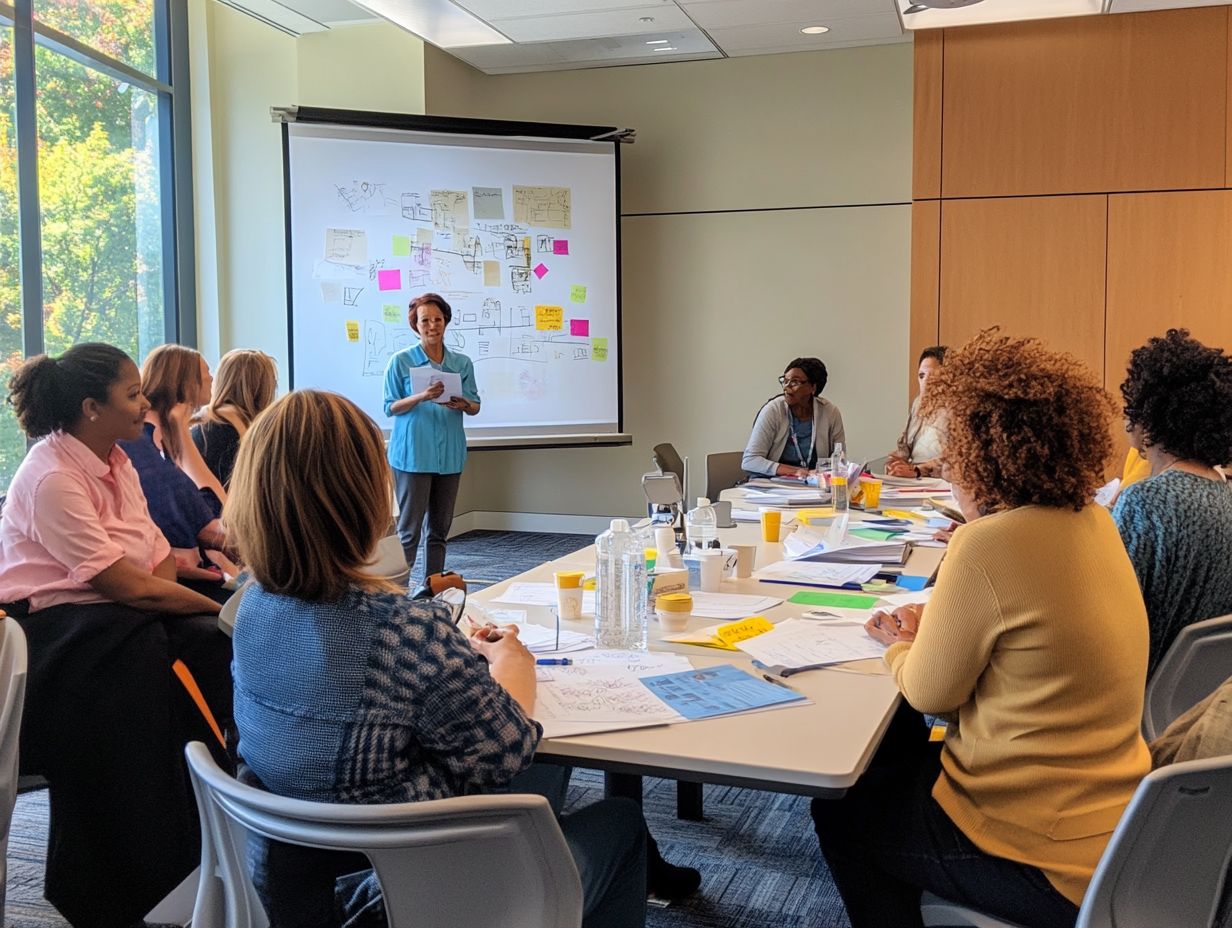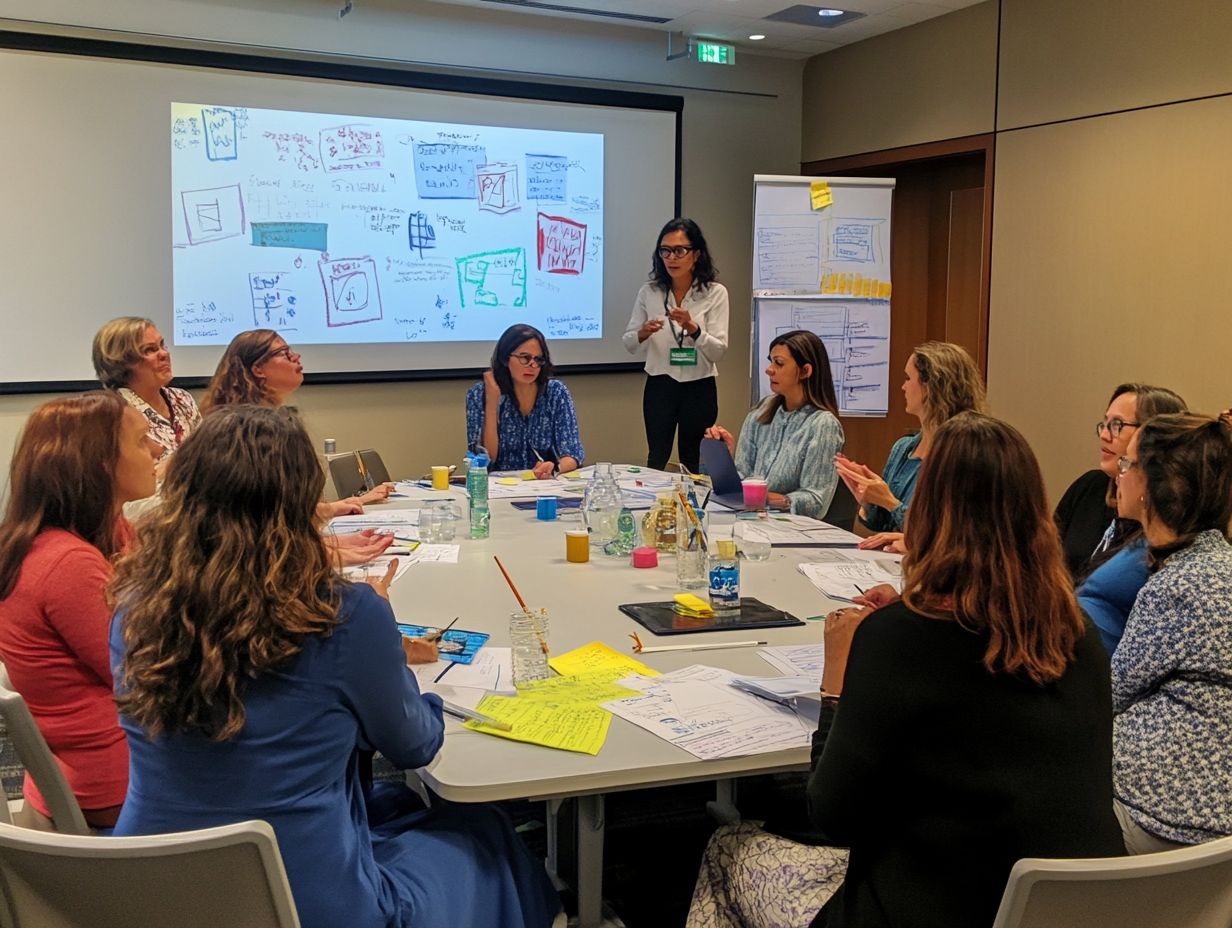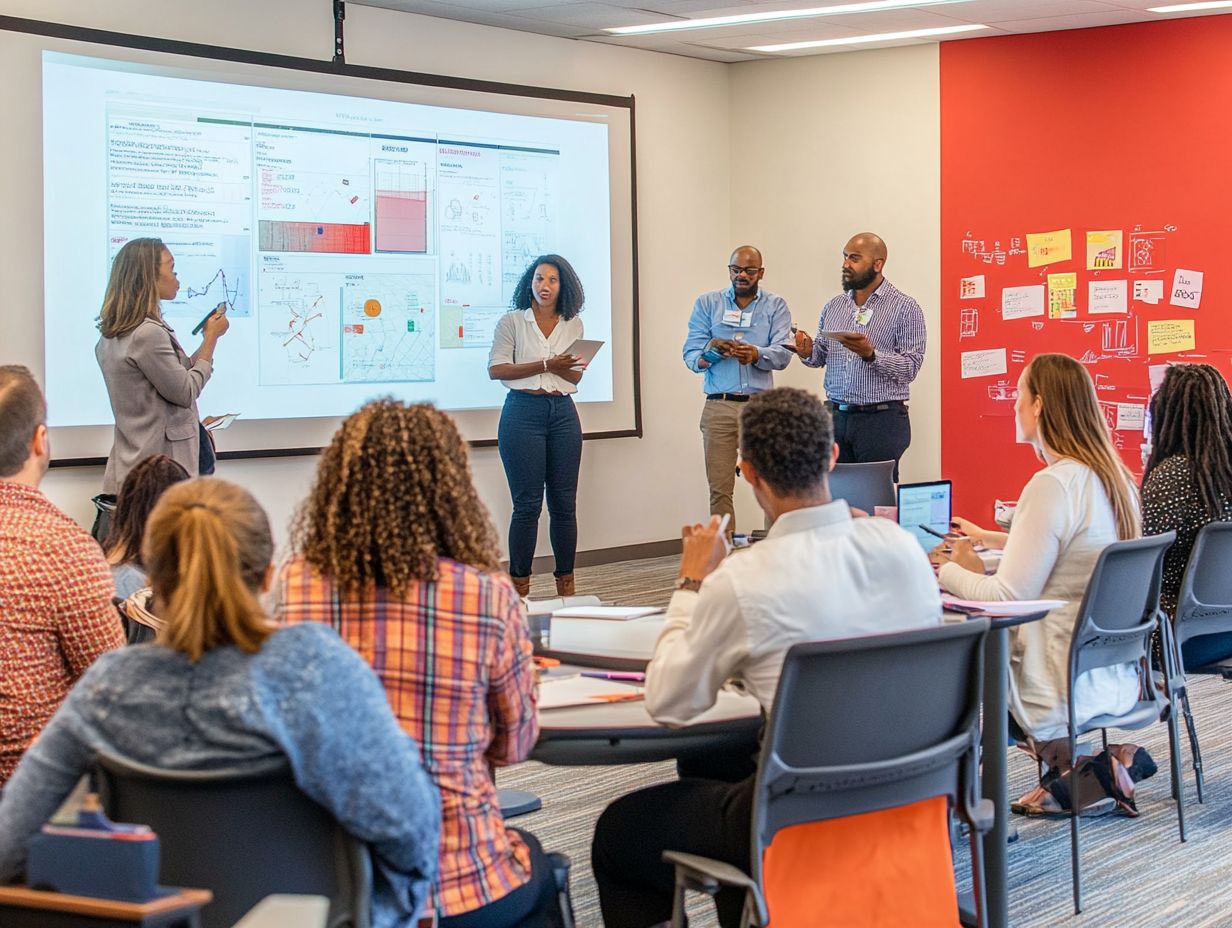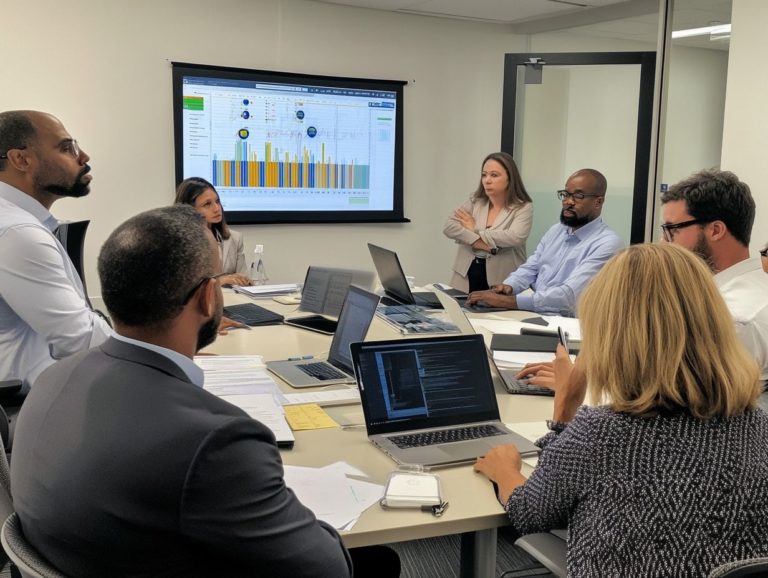creating tailored training for different roles
In today s fast-paced work environment, effective training is essential for your success. A one-size-fits-all approach often misses the mark, leaving you and your employees feeling underprepared for your specific roles.
This article delves into the importance of tailored training programs that cater to the unique needs of various positions within your organization. From conducting a thorough training needs analysis to designing and implementing impactful programs, we will explore the key elements that ensure training resonates with your employees.
We will also emphasize the significance of continuous learning and ongoing education in nurturing professional growth. Discover how a customized training strategy can truly transform your workforce!
Contents
- Key Takeaways:
- The Importance of Tailored Training
- Identifying Different Roles and Training Needs
- Designing Tailored Training Programs
- Implementing and Evaluating Tailored Training
- Continuing Education and Ongoing Training
- Frequently Asked Questions
- What is the purpose of creating tailored training for different roles?
- How do you determine the training needs for different roles?
- What factors should be considered when creating tailored training for different roles?
- What are some effective methods for delivering tailored training for different roles?
- How can you measure the success of tailored training for different roles?
- How often should tailored training for different roles be updated?
Key Takeaways:

Tailored training is crucial for the success of employees as one-size-fits-all training does not cater to individual needs and roles effectively.
Conducting a training needs analysis is essential for identifying the specific training needs of different roles within an organization.
Effective training programs should include key elements such as clear objectives, interactive methods, and adaptation to different roles for maximum impact.
The Importance of Tailored Training
Tailored training is crucial for organizations like yours. It elevates workforce development and maximizes the effectiveness of employee training.
Unlike traditional methods that often rely on a one-size-fits-all approach, tailored training solutions focus on the unique needs of each employee. By addressing skill gaps and aligning with specific job roles, this personalized learning strategy not only cultivates individual excellence but also plays an important role in driving overall organizational growth.
This ensures that your training programs remain relevant, engaging, and effective for every member of your team.
Why One-Size-Fits-All Training Doesn’t Work
A one-size-fits-all training approach simply doesn t cut it for addressing the diverse needs and unique job roles of employees. This often leads to decreased effectiveness and lower satisfaction.
This uniformity overlooks the varying skill levels and specialized abilities that individuals bring to their roles, creating significant gaps in knowledge and performance.
When you fail to conduct a thorough skills gap analysis, you miss the chance to pinpoint specific areas where employees need targeted training. This leads to a decrease in operational efficiency, which ultimately affects overall productivity.
Customizing learning paths to suit the distinct responsibilities and competencies of each employee is crucial. Personalized training not only boosts engagement but also fosters professional growth, contributing to a stronger, more capable workforce overall.
Identifying Different Roles and Training Needs
Identifying various job roles along with their specific training needs is essential for fostering effective employee development and enhancing skills within your organization.
By conducting a comprehensive skills gap analysis, you can pinpoint the precise training requirements tailored to each unique role, ensuring that every team member is equipped with the resources they need to excel.
This strategic approach not only enhances training outcomes but also cultivates a culture of continuous improvement and engagement throughout the organization.
Conducting a Training Needs Analysis
Conducting a training needs analysis is a systematic process that gives you the power to identify the specific training programs necessary for achieving employee development goals and enhancing performance metrics.
This thorough approach starts with evaluating the current competencies of your employees, enabling you to pinpoint where their strengths lie and where there s room for improvement.
Next, it’s essential to identify knowledge or skill gaps that might be holding back overall performance. By clearly defining the desired training outcomes, you can craft tailored learning paths that effectively address these gaps.
This analysis not only helps in designing targeted training solutions but also ensures that your resources are utilized efficiently! The result? A more skilled workforce ready to tackle challenges and propel your organization forward.
Designing Tailored Training Programs

Creating tailored training programs requires a careful plan that includes learning tools that adjust to users and interactive content. This mix creates fun and engaging learning for employees.
By using these innovative tools, you can design training that meets the varied needs of different job roles. This boosts employee satisfaction and ensures that every training program contributes to your organization s growth.
Key Elements of Effective Training
Effective training includes clear modules, ongoing feedback, and relevant content that resonates with learners. These elements help create a rich learning environment that keeps information flowing logically.
Clear training modules ensure each topic builds upon the last, improving understanding. Ongoing feedback helps identify strengths and areas for growth, fostering a culture of improvement.
Adapting Training Methods for Different Roles
It’s essential to adjust training methods for different roles. This ensures employees find satisfaction and engagement in their learning.
Each position in your organization has unique challenges. Therefore, using varied training techniques that match specific job functions is key.
For instance, customer-facing roles may thrive on workshops that enhance communication, while technical roles benefit from hands-on problem-solving exercises. Tailoring training to these specific skills not only strengthens your workforce but also boosts morale.
Implementing and Evaluating Tailored Training
Implementing and evaluating training programs is vital to ensure meaningful outcomes. Focus on customization and assessment to create a path for growth that meets your team s needs.
Ensuring Successful Implementation
Successful training implementation requires careful planning, clear communication, and a commitment to ongoing feedback. Involving stakeholders from the start builds ownership and alignment with your goals.
Set clear objectives to guide the training process. Regular check-ins and feedback create open dialogue, allowing participants to share concerns.
Fostering an engaged atmosphere is crucial. When employees feel motivated to learn new skills, the training experience benefits everyone involved.
Evaluating the Effectiveness of Training

Evaluating training effectiveness is crucial for understanding its impact on performance results and overall outcomes. Employee satisfaction must remain a priority throughout this process.
Various evaluation methods are available, including surveys, assessments, and performance tracking. Each method provides valuable insights into how well the training resonates with participants.
Surveys gauge immediate reactions and gather feedback. In contrast, assessments offer a deeper understanding of knowledge retention and skill acquisition. Ongoing performance tracking highlights trends over time and identifies areas needing enhancement.
Analyze this data to refine your training programs! Make adjustments to better meet your workforce’s evolving needs and foster a culture of sustained growth and development.
Continuing Education and Ongoing Training
Continuing education and ongoing training are essential for workforce sustainability. By prioritizing these elements, organizations empower individuals to cultivate personal growth and advance their careers.
The Importance of Continuous Learning
Continuous learning is your ticket to maintaining a competitive edge in today s fast-paced environment. Prioritizing employee training and skill development paves the way for workforce sustainability.
Organizations that embrace this culture equip their teams with the latest tools and knowledge, creating an atmosphere where innovation can thrive. Encouraging employees to pursue new skills increases their engagement in work, knowing they are on a path of continuous evolution.
This proactive mindset boosts individual confidence and enhances collaboration and creativity across teams. By emphasizing continuous learning, you can significantly improve retention rates!
Employees are more likely to stay where they feel invested in their growth, making it a win-win for everyone involved.
Methods for Continuing Education and Training
Numerous avenues for continuing education and training are available, including cutting-edge digital learning platforms that offer personalized and adaptive experiences tailored to your needs.
In-person workshops and seminars are also available and provide hands-on training while fostering collaboration among colleagues. These settings enrich the learning experience.
Interactive sessions accommodate various learning styles, enabling participants to engage deeply with the material. Companies can customize these programs to align with specific career paths and address skill gaps effectively.
Innovative technologies like virtual reality or gamification can make learning immersive and enjoyable. This approach leads to heightened engagement and better knowledge retention, ensuring that learning is effective and motivating.
Frequently Asked Questions
What is the purpose of creating tailored training for different roles?

Tailored training ensures employees gain the specific knowledge and skills needed to perform their jobs effectively. It also increases job satisfaction and retention rates by providing opportunities for growth and development.
How do you determine the training needs for different roles?
The first step in creating tailored training is assessing the specific skills and knowledge required for each role. This can be done through job analysis, performance evaluations, and surveys.
Involving employees and managers in this process ensures that the training meets their needs and addresses any skill gaps effectively.
What factors should be considered when creating tailored training for different roles?
When creating tailored training, consider the specific job duties and the employees’ experience levels. Also, think about the company’s goals and how employees learn best.
What are some effective methods for delivering tailored training for different roles?
Effective delivery methods include classroom training, online courses, and workshops. Mixing these methods can create a richer learning experience.
How can you measure the success of tailored training for different roles?
You can measure success with assessments, surveys, and performance reviews. Set clear goals and gather feedback from both employees and managers to gauge effectiveness.
How often should tailored training for different roles be updated?
Regularly review and update training to keep it relevant. At least once a year is recommended, but consider more frequent updates based on feedback and industry trends.






